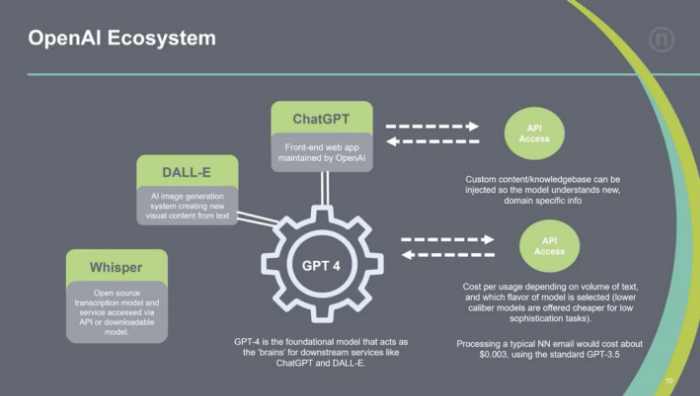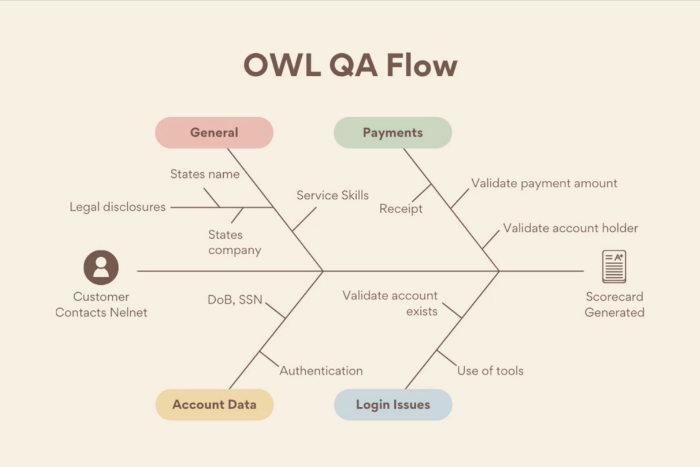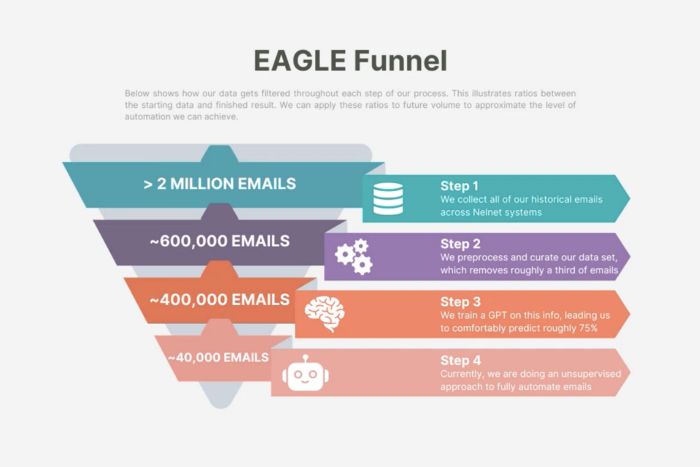Taking the Mystery Out of AI and Finding Practical Applications
Innovation is a part of daily life at Nelnet—not just for technologists, developers, and software analysts, but for everyone. It’s part of Nelnet’s culture because it’s how we grow, improve, and diversify. That’s why the organization holds events such as Innovation Week and invites all associates to participate in as many sessions and events as their schedules allow.
Nelnet’s executive leadership team has given Nelnet associates the green light to learn how to use AI to explore how they can do their jobs more effectively and efficiently. It’s not surprising that there was a session about AI at the organization’s most recent Innovation Week in November.
Nelnet Data Science Manager Josh Jones led the session titled Unlocking the Power of Artificial Intelligence. Jones, a former Nelnet Pathway and Data Science intern, explored the history of AI and how it can be used to effect positive change.
About Artificial Intelligence and Its Roots
Jones provided a more comprehensive definition of AI, but simplified it as math delivered through computer science. As he pointed out, AI is essentially putting data through an equation that allows it to create a prediction. He noted that AI is present in much of what we do in our daily lives—from Googling information to asking Alexa and even passing a stoplight on the way to work.
Artificial Intelligence refers to the simulation of human intelligence by machines, especially computer systems. It involves the creation and application of algorithms that enable machines to perform tasks that typically require human intelligence, such as learning, reasoning, problem-solving, perception, and language understanding.
Jones dispelled a common misconception that AI is new, noting that it was first introduced by computer scientist Alan Turing in 1950, who proposed a test for machine intelligence. The term ‘artificial intelligence’ was coined in 1955 by computer scientist John McCarthy to describe “the science and engineering of making intelligent machines.” The first industrial robot (1961), first chatbot (1964), and first general purpose mobile robot (1966) were followed by a period termed AI winter, which lasted until 1997. During that period, Jones said, complex algorithms were developed, but hardware to support them was lacking.
Recent AI Developments: ChatGPT
Many people think of ChatGPT when they think of AI. A product of OpenAI, which was founded in 2015, ChatGPT wasn’t user-friendly for mainstream users when it was first released in 2017-18. Nelnet obtained ChatGPT when GPT-2 was available in late 2019. Since 2021, OpenAI has been releasing products at an insanely fast rate, Jones said.
According to Jones, several things differentiate ChatGPT, including:
- Its ability to deliver ‘tipping point’ class conversational experience.
- Additional natural language functions it can perform, including content summarization, expansion, and answering complex questions or statements.
- The breadth of ‘language’ it understands, from personalization to programming.
- Its ability to retain in-chat ‘memory’ for a fluid, contextual exchange.
- Easy accessibility for flexible, modern integration with other systems and applications.
As Jones pointed out, the current foundational model and brains for OpenAI’s other downstream services is GPT-4. The ecosystem is rapidly evolving, but here are the components as of November 2023.

As Jones noted, DALL-E is an exciting development because it allows you to create visual content from text and even create your own chatbot and download your own assistant. Whisper does text-to-speech or speech-to-text transcription.
Past AI Initiatives at Nelnet
AI has had—and is having—a wide impact within Nelnet’s various business segments. Jones and his team interact with all of Nelnet’s businesses, summarizing the major uses of AI at Nelnet.
- ALLO
- Customer acquisition, product upsell, market evaluation, and customer churn models
- Nelnet Financial Services
- Portfolio performance, individual borrower risk, and school performance models
- Nelnet Diversified Services
- Customer acquisition, forbearance emergence, portfolio performance, asset risk, and contact modeling
- Nelnet Business Services
- Customer clustering, optical character recognition
Current AI Projects at Nelnet
Jones said that the Data Science team uses AI to create names for their various projects. Whether they’ve specifically asked for animal names or not is unclear, but Jones joked that the team appears to be zookeepers as much as data scientists.
OWL-QA
A current project called OWL-QA (Optimized Whisper Listener for Quality Assurance) uses a tree structure to assess and score calls for quality assurance. A tree structure replicates what we have to do for QA today for each type of call (whether it’s a payment call, a borrower having a login issue, etc.).

Scores are fed back into CX1 and a scorecard is filled out and that’s how agents are evaluated, said Jones. At this point, we’re targeting the payment vertical in terms of complexity. While Jones said we’re currently scoring only about 1-3% of calls using OWL, we eventually want to get to 100%. The time required to use OWL is the actual time needed for the call plus a 50% buffer for data cleansing to remove personally identifiable information (PII). Jones noted that human effort was used to create the process and interpret human feedback and then translated into AI prompting with the goal of improving both calls and agents.
EAGLE Funnel
Email Assistance and Guidance Language Engine (EAGLE) allows contact center agents to quickly search thousands of email templates and efficiently respond to customer inquiries with the goal of pulling in the most appropriate communication and auto-populating the customer’s information.

By having AI automate this process, we can save agents for more complex tasks. At this point, we’re not automating anything in production because we don’t want to risk a bad customer experience by responding with the wrong thing, but we are using EAGLE to parse down emails.
Agent Assistance with BEAR
The Bot for Efficiently Accessing Resources (BEAR) is a chatbot used by contact center agents to help them access Nelnet’s repository of internal data used to train and consult agents. The information provided by the bot lists for the agent the resource being used and highlights the content being accessed within the PDF. Alternate resources are also listed for the agent to access.
Agents are encouraged to like or dislike content provided by BEAR so the team can check for inaccurate information or make edits to information that’s considered too long, for example, to be helpful on a call. Content labeled as inaccurate is escalated. About 25% of the content is liked, and only 2.8% is labeled as incorrect (although, according to Jones, some of these turn out to be correct).
Associates attending Jones’ presentation asked how other areas of Nelnet can get their own BEAR. He mentioned that they can reach out to him directly or the Data Science team. The simplicity of setting up BEAR depends on how your data is formatted.
Getting Started With AI
When asked how to get started with using AI to be more efficient in your daily work, Jones said it’s important to learn how to engineer prompts that will get you the results you need—and that there’s a certain amount of trial and error. He suggests:
- Being specific with what you need in order to get the best results.
- Evoking emotional response to get 8% better results, says Jones. (For example, “This is very important for my career.”)
- Asking for step-by-step direction. (For example, “Please teach me how to take my JavaScript experience and translate it to Python. It’s very important to my career.”)
Lastly, Jones and his fellow team members disagree as to whether using please and thank you impacts your results. Jones feels it’s always good to be considerate and that it yields better results. While we don’t know how that works with AI, we don’t disagree. (Thanks for the user-friendly information on AI, Josh Jones. It’s very important to our careers.)


